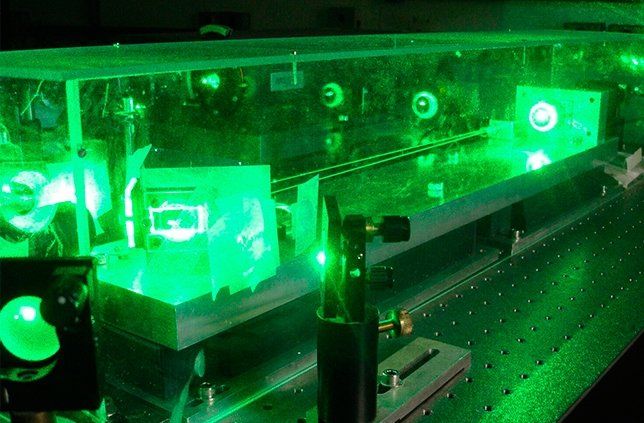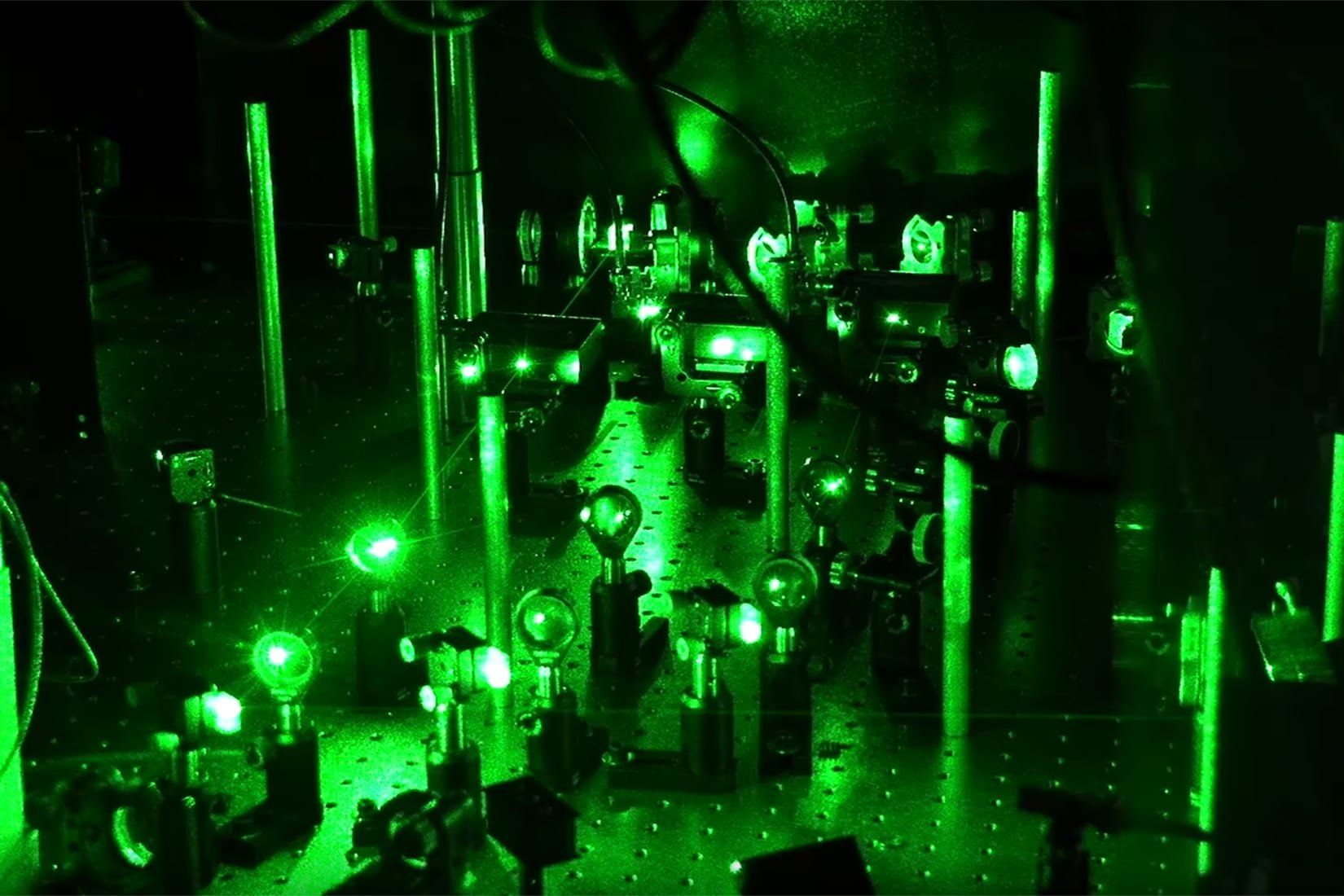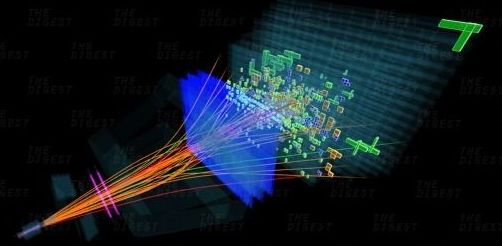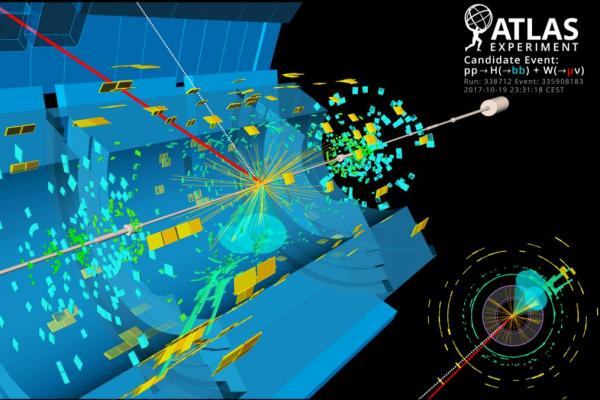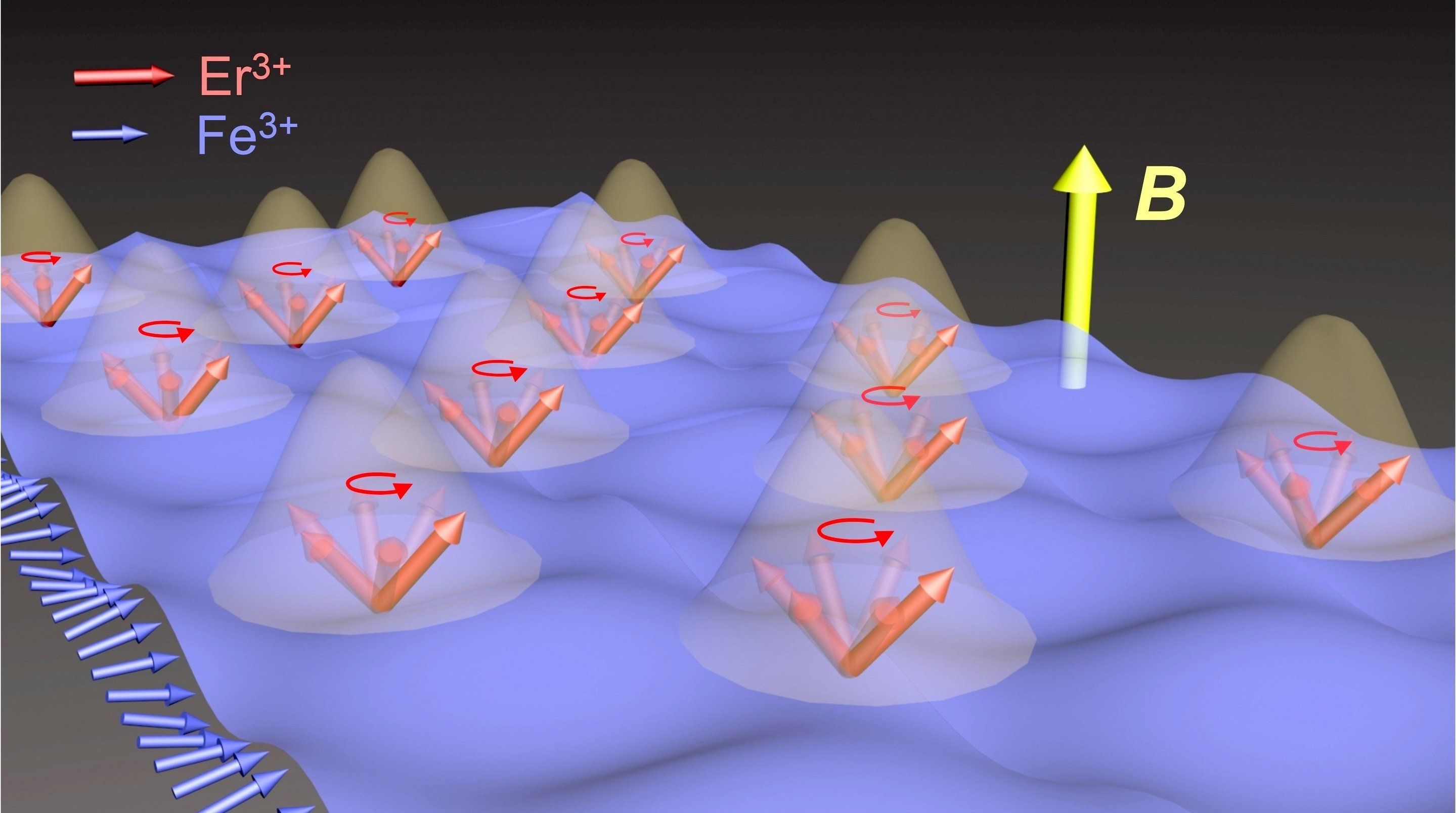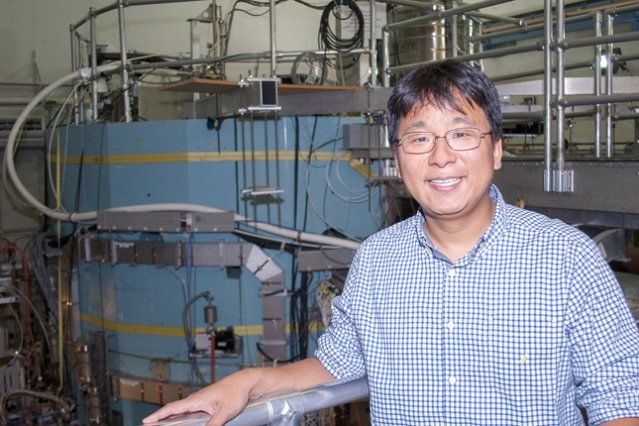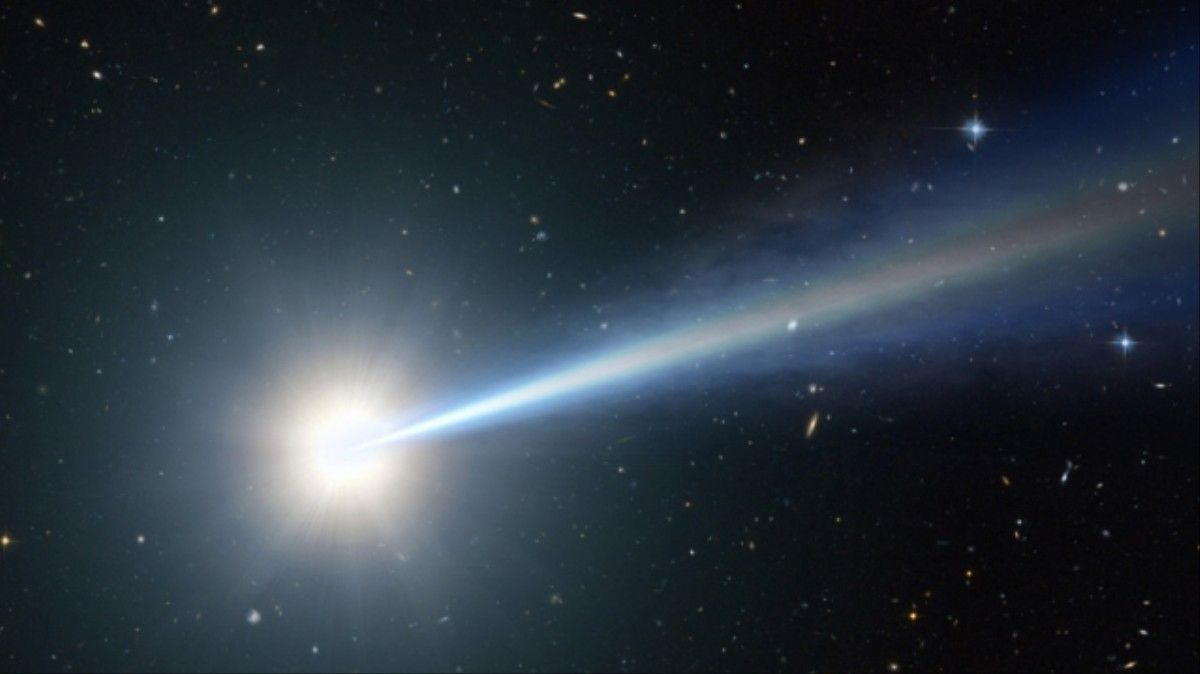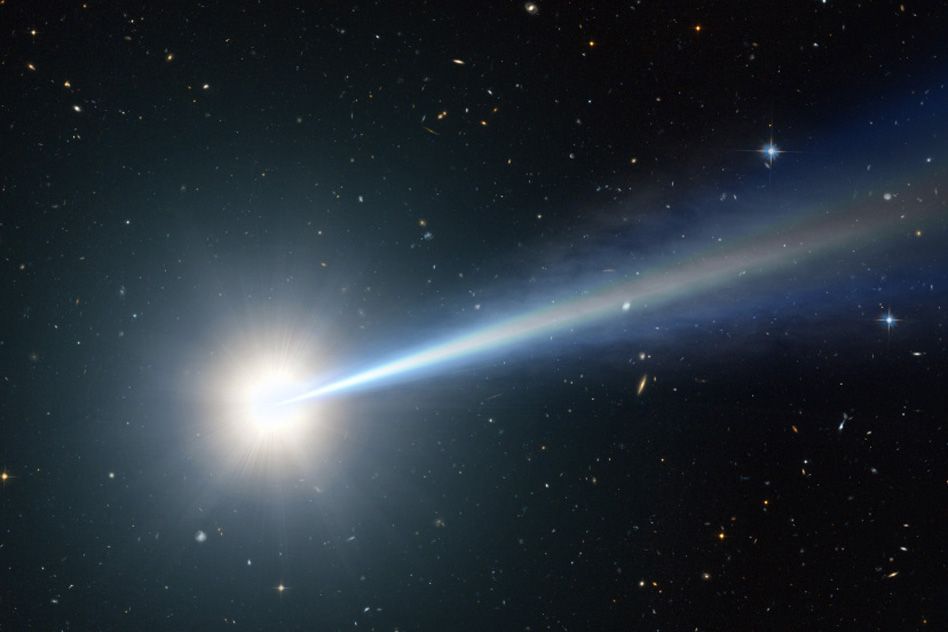Archive for the ‘particle physics’ category: Page 456
Sep 7, 2018
Experiment obtains entanglement of six light waves with a single laser
Posted by Genevieve Klien in categories: particle physics, quantum physics
Austrian physicist Erwin Schrödinger (1887−1961), one of the giants of contemporary science, considered entanglement the most interesting property in quantum mechanics. In his view, it was this phenomenon that truly distinguished the quantum world from the classical world. Entanglement occurs when groups of particles or waves are created or interact in such a way that the quantum state of each particle or wave cannot be described independently of the others, however far apart they are. Experiments performed at the University of São Paulo’s Physics Institute (IF-USP) in Brazil have succeeded in entangling six light waves generated by a simple laser light source known as an optical parametric oscillator.
Articles about these experiments have been published in Physical Review Letters and Physical Review A. The experiments are highlighted in a special news feature posted online.
“Our platform is capable of generating a massive entanglement of many optical modes with different but well-defined frequencies, as if connecting the nodes of a large network. The quantum states thus produced can be controlled by a single parameter: the power of the external laser that pumps the system,” said Marcelo Martinelli, one of the coordinators of the experiments. Martinelli is a professor at IF-USP and the principal investigator for the project.
Sep 4, 2018
Ultracold atoms used to verify 1963 prediction about 1-D electrons
Posted by Genevieve Klien in categories: computing, nanotechnology, particle physics
Rice University atomic physicists have verified a key prediction from a 55-year-old theory about one-dimensional electronics that is increasingly relevant thanks to Silicon Valley’s inexorable quest for miniaturization.
“Chipmakers have been shrinking feature sizes on microchips for decades, and device physicists are now exploring the use of nanowires and nanotubes where the channels that electrons pass through are almost one-dimensional,” said Rice experimental physicist Randy Hulet. “That’s important because 1D is a different ballgame in terms of electron conductance. You need a new model, a new way of representing reality, to make sense of it.”
With IBM and others committed to incorporating one-dimensional carbon nanotubes into integrated circuits, chip designs will increasingly need to account for 1D effects that arise from electrons being fermions, antisocial particles that are unwilling to share space.
Aug 29, 2018
An Acceleration Breakthrough Could Fundamentally Change How We Study Particles
Posted by Genevieve Klien in categories: innovation, particle physics
Particle accelerators can lead to major breakthroughs in our understanding of the universe, and now, we may have a better way to create them.
Aug 28, 2018
Scientists observe decay of Higgs boson particle into two bottom quarks
Posted by Genevieve Klien in category: particle physics
Aug. 28 (UPI) — Particle physicists have finally witnessed the decay of a Higgs boson particle into two bottom quarks.
Models predict Higgs boson particles decay into two bottom quarks 60 percent of the time. Bottom quarks, or b quarks, are the second heaviest of the six types of quarks.
Scientists have struggled to directly observe the predicted decay. Several types of proton-proton collisions can produce bottom quarks, making it difficult to link quarks produced by particle collisions with decaying Higgs boson particles.
Continue reading “Scientists observe decay of Higgs boson particle into two bottom quarks” »
Aug 24, 2018
Research team finds evidence of matter-matter coupling
Posted by Genevieve Klien in categories: computing, particle physics, quantum physics
After their recent pioneering experiments to couple light and matter to an extreme degree, Rice University scientists decided to look for a similar effect in matter alone. They didn’t expect to find it so soon.
Rice physicist Junichiro Kono, graduate student Xinwei Li and their international colleagues have discovered the first example of Dicke cooperativity in a matter-matter system, a result reported in Science this week.
The discovery could help advance the understanding of spintronics and quantum magnetism, Kono said. On the spintronics side, he said the work will lead to faster information processing with lower power consumption and will contribute to the development of spin-based quantum computing. The team’s findings on quantum magnetism will lead to a deeper understanding of the phases of matter induced by many-body interactions at the atomic scale.
Continue reading “Research team finds evidence of matter-matter coupling” »
Aug 24, 2018
Pushing the plasma density limit
Posted by Bill Kemp in categories: nuclear energy, particle physics
For decades, researchers have been exploring ways to replicate on Earth the physical process of fusion that occurs naturally in the sun and other stars. Confined by its own strong gravitational field, the sun’s burning plasma is a sphere of fusing particles, producing the heat and light that makes life possible on earth. But the path to a creating a commercially viable fusion reactor, which would provide the world with a virtually endless source of clean energy, is filled with challenges.
Researchers have focused on the tokamak, a device that heats and confines turbulent plasma fuel in a donut-shaped chamber long enough to create fusion. Because plasma responds to magnetic fields, the torus is wrapped in magnets, which guide the fusing plasma particles around the toroidal chamber and away from the walls. Tokamaks have been able to sustain these reactions only in short pulses. To be a practical source of energy, they will need to operate in a steady state, around the clock.
Researchers at MIT’s Plasma Science and Fusion Center (PSFC) have now demonstrated how microwaves can be used to overcome barriers to steady-state tokamak operation. In experiments performed on MIT’s Alcator C-Mod tokamak before it ended operation in September 2016, research scientist Seung Gyou Baek and his colleagues studied a method of driving current to heat the plasma called Lower Hybrid Current Drive (LHCD). The technique generates plasma current by launching microwaves into the tokamak, pushing the electrons in one direction—a prerequisite for steady-state operation.
Aug 22, 2018
Ancient Starlight Just Helped Confirm the Reality of Quantum Entanglement
Posted by Genevieve Klien in categories: particle physics, quantum physics
Quantum entanglement is the theory that particles can be connected in such a way that measuring one particle can instantaneously convey information about that measurement to the other particle, regardless of the distance between them. It almost sounds like magic, which is probably why it received a healthy dose of criticism from the physics community when the theory was first proposed nearly 100 years ago.
Albert Einstein was a particularly vocal critic of entanglement, which he famously described as “spooky action at a distance.” Part of Einstein’s beef with the quantum mechanics crowd was that he believed that particles have definite qualities that exist before they are measured and that two particles distant in space and time can’t affect one another instantaneously since they are limited by the speed of light—a viewpoint known as local realism.
Under quantum mechanics, however, the properties of a particle don’t exist independently of measurement used to determine those properties. Moreover, when it comes to entangled particles, the measurement of one particle will instantaneously influence the properties of the other entangled particle. This means that the values of these properties will be highly correlated—so highly correlated, in fact, that the degree of coincidence in their values can’t really be explained without recourse to quantum mechanics.
Continue reading “Ancient Starlight Just Helped Confirm the Reality of Quantum Entanglement” »
Aug 20, 2018
Light from ancient quasars helps confirm quantum entanglement
Posted by Genevieve Klien in categories: particle physics, quantum physics
Last year, physicists at MIT, the University of Vienna, and elsewhere provided strong support for quantum entanglement, the seemingly far-out idea that two particles, no matter how distant from each other in space and time, can be inextricably linked, in a way that defies the rules of classical physics.
Take, for instance, two particles sitting on opposite edges of the universe. If they are truly entangled, then according to the theory of quantum mechanics their physical properties should be related in such a way that any measurement made on one particle should instantly convey information about any future measurement outcome of the other particle—correlations that Einstein skeptically saw as “spooky action at a distance.”
In the 1960s, the physicist John Bell calculated a theoretical limit beyond which such correlations must have a quantum, rather than a classical, explanation.
Continue reading “Light from ancient quasars helps confirm quantum entanglement” »
Aug 18, 2018
A group of physicists are questioning our understanding of how quarks — a type of elementary particle — arrange themselves under extreme conditions
Posted by Shailesh Prasad in category: particle physics
A group of physicists are questioning our understanding of how quarks — a type of elementary particle — arrange themselves under extreme conditions. And their quest is revealing that elements beyond the edge of the periodic table might be fair weirder than we thought.
Deep in the depths of the periodic table there are monsters made of a unique arrangement of subatomic particles. As far as elements go, they come no bigger than oganesson – a behemoth that contains 118 protons and has an atomic mass of just under 300.
That’s not to say protons and neutrons can’t be arranged into even bigger clumps and still remain somewhat stable for longer than an eye blink. But for all practical purposes, nobody has discovered it yet.

